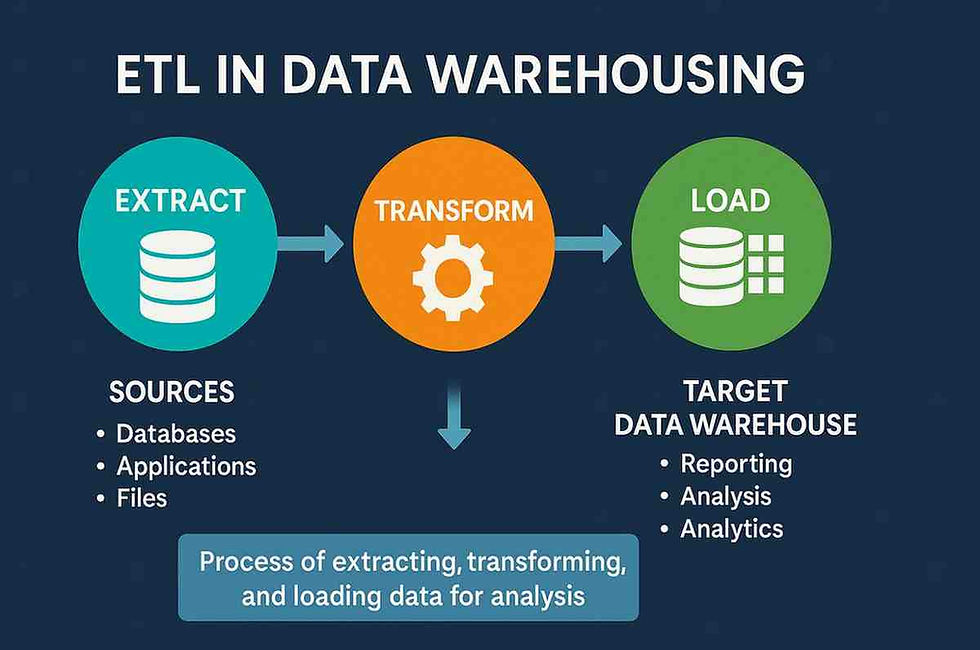Retesting vs Regression Testing: Guide & Key Differences 2025
- Gunashree RS
- Jul 1
- 7 min read
Introduction
Software testing forms the backbone of reliable application development, yet two critical testing approaches often create confusion among development teams: retesting and regression testing. While both methodologies aim to ensure software quality, they serve distinctly different purposes in the testing lifecycle. Understanding these differences can dramatically improve your testing strategy and product reliability.
According to recent industry data, 73% of testers use scripting and/or test automation for functional and regression testing, highlighting the growing importance of these testing methodologies in modern software development.

What is Retesting? Understanding the Fundamentals
Definition and Core Purpose
Retesting represents a focused testing approach where quality assurance teams verify that previously identified defects have been successfully resolved. This targeted methodology involves re-executing specific test cases that initially failed to confirm that developers have addressed the underlying issues.
Key Characteristics of Retesting:
Focuses exclusively on known defects
Tests the specific functionality that previously failed
Confirms bug fixes are working as intended
Typically performed by the same tester who discovered the original defect
When Should You Implement Retesting?
Primary Scenarios for Retesting:
Post-Bug Fix Verification: After developers resolve identified issues
Specific Feature Validation: When particular components require targeted testing
Defect Confirmation: To verify that reported bugs have been properly addressed
Quality Assurance: Before moving to broader testing phases
Real-World Retesting Example
Consider an e-commerce platform where the shopping cart's "Add to Cart" button fails to function properly. After developers fix this specific issue, retesting involves:
Re-executing the exact test case that revealed the original defect
Verifying that the "Add to Cart" functionality works correctly
Confirming the fix doesn't create new issues in the immediate area
Documenting the successful resolution
What is Regression Testing? The Comprehensive Safety Net
Definition and Strategic Importance
Regression testing serves as a comprehensive safety mechanism that ensures new code changes, bug fixes, or feature additions don't negatively impact existing functionality. This broader testing approach helps maintain software stability across all application components.
Essential Elements of Regression Testing:
Tests the entire application functionality
Identifies unintended side effects of code changes
Maintains overall system integrity
Prevents feature degradation after updates
Strategic Implementation of Regression Testing
Optimal Scenarios for Regression Testing:
After Major Updates: Following significant feature additions or modifications
Bug Fix Implementation: After resolving defects, ensure no new issues emerge
Integration Testing: When combining new modules with existing systems
Release Preparation: Before deploying updates to production environments
Comprehensive Regression Testing Example
When the same e-commerce platform receives a payment processing update, regression testing involves:
Testing all existing features (user registration, product browsing, checkout process)
Verifying payment integration doesn't break other functionalities
Ensuring the user experience remains consistent across all modules
Confirming that performance benchmarks are maintained
Retesting vs Regression Testing: A Detailed Comparison
Q: What are the fundamental differences between these approaches?
A: The primary distinction lies in scope and purpose:
Aspect | Retesting | Regression Testing |
Purpose | Verify specific bug fixes | Ensure overall system stability |
Scope | Narrow, targeted testing | Broad, comprehensive testing |
Focus | Known defects | Unknown potential issues |
Timing | After bug fixes | After any code changes |
Automation | Limited automation potential | Highly automatable |
Q: How do testing objectives differ between these methodologies?
A: The core difference between retesting and regression testing is that retesting is meant to check for known bugs and is used to reaffirm that the bug in question has been fixed, generally. Regression testing is different because it searches the application for unknown bugs, which may have occurred due to recent changes.
Retesting Objectives:
Confirm defect resolution
Validate specific functionality restoration
Ensure reported issues are properly addressed
Maintain focused quality control
Regression Testing Objectives:
Prevent feature degradation
Identify unintended consequences
Maintain system-wide stability
Ensure backward compatibility
Q: Which approach should teams prioritize in their testing strategy?
A: Both methodologies are essential and complementary. The main difference is that regression testing is for bugs you do not expect, and retesting is for bugs you do. Successful testing strategies incorporate both approaches strategically.
Industry Statistics and Expert Insights
Current Testing Landscape
The adoption of test automation is accelerating, with 26% of teams replacing up to 50% of their manual testing efforts and 20% replacing 75% or more. This trend significantly impacts both retesting and regression testing approaches.
Expert Perspectives on Testing Evolution
Industry experts emphasize the growing importance of intelligent testing strategies. Regression testing in 2024 focuses more on automation, efficiency, and leveraging advancements in artificial intelligence (AI) and machine learning (ML).
Key Industry Trends:
Increased automation adoption in regression testing
AI-powered test case generation and execution
Shift-left testing methodologies
Continuous integration and deployment integration
Best Practices for Implementation
Retesting Best Practices
1. Maintain Detailed Documentation
Record original defect conditions
Document expected vs. actual results
Track fix implementation details
Monitor resolution timelines
2. Follow Systematic Approaches
Use identical test environments
Employ the same test data sets
Maintain consistent testing procedures
Verify complete defect resolution
3. Collaborate Effectively
Communicate clearly with development teams
Provide comprehensive defect reports
Establish clear acceptance criteria
Maintain ongoing feedback loops
Regression Testing Best Practices
1. Implement Automation Strategies
Automate repetitive test cases
Utilize continuous integration tools
Develop comprehensive test suites
Maintain automated test reliability
2. Prioritize Test Coverage
Focus on critical business functions
Include edge cases and boundary conditions
Test integration points thoroughly
Maintain comprehensive test matrices
3. Optimize Testing Efficiency
Select appropriate regression test subsets
Implement risk-based testing approaches
Utilize parallel testing execution
Monitor test execution metrics
Common Challenges and Solutions
Q: What are the most significant challenges teams face with retesting?
A: Common retesting challenges include:
Challenge 1: Limited Scope Issues
Problem: Missing related defects in surrounding functionality
Solution: Expand test coverage slightly beyond the immediate fix area
Challenge 2: Time Constraints
Problem: Pressure to quickly verify fixes without thorough testing
Solution: Establish minimum testing standards and timeframes
Challenge 3: Communication Gaps
Problem: Unclear defect resolution details from development teams
Solution: Implement standardized fix documentation processes
Q: How can teams overcome regression testing obstacles?
A: Key regression testing challenges and solutions:
Challenge 1: Test Maintenance Overhead
Problem: Keeping large test suites updated and relevant
Solution: Implement regular test suite reviews and cleanup processes
Challenge 2: Execution Time Constraints
Problem: Comprehensive testing requires a significant time investment
Solution: Develop risk-based testing strategies and smart test selection
Challenge 3: False Positive Management
Problem: Automated tests flagging non-issues
Solution: Improve test reliability and implement result validation processes
Future Trends and Technology Integration
Emerging Technologies in Testing
Artificial Intelligence Integration:
Intelligent test case generation
Predictive defect identification
Automated test maintenance
Smart test execution optimization
Machine Learning Applications:
Pattern recognition in defect analysis
Test case prioritization algorithms
Risk assessment automation
Performance prediction modeling
Industry Evolution Predictions
Next 5 Years in Testing:
Increased AI-driven test automation
Enhanced continuous testing integration
Improved cross-platform testing capabilities
Advanced analytics and reporting tools
Conclusion
Understanding the distinction between retesting and regression testing is crucial for developing effective quality assurance strategies. While retesting focuses on verifying specific defect resolutions, regression testing ensures overall system stability after code changes. Both methodologies play vital roles in maintaining software quality and should be strategically implemented based on project requirements, timeline constraints, and risk assessments.
Successful testing teams recognize that these approaches complement rather than compete with each other. By implementing comprehensive testing strategies that incorporate both retesting and regression testing, organizations can achieve higher software quality, reduced defect rates, and improved user satisfaction.
The future of software testing continues evolving with technological advancements, but the fundamental principles of targeted defect verification and comprehensive system validation remain constant. Teams that master both retesting and regression testing approaches will be better positioned to deliver reliable, high-quality software products in an increasingly competitive market.
Key Takeaways
• Retesting targets specific known defects, while regression testing covers broader system functionality
• Both approaches are essential for comprehensive quality assurance strategies
• Automation significantly benefits regression testing, but has limited application in retesting
• 73% of testing teams use automation for functional and regression testing processes
• Retesting confirms defect resolution, while regression testing prevents new issues
• AI and machine learning are transforming both testing methodologies
• Risk-based testing strategies help optimize time and resource allocation
• Continuous integration enhances both retesting and regression testing effectiveness
• Documentation and communication are critical for successful testing implementation
• Future testing trends focus on intelligent automation and predictive analytics
Frequently Asked Questions (FAQs)
Q: Can retesting and regression testing be performed simultaneously?
A: While both can occur within the same testing cycle, they serve different purposes. Retesting typically happens first to verify defect fixes, followed by regression testing to ensure no new issues have emerged from the changes.
Q: Is automation always better for regression testing?
A: Automation is highly beneficial for regression testing due to its repetitive nature, but manual testing may still be necessary for complex scenarios, usability aspects, or exploratoryy testing components.
Q: How long should retesting take compared to regression testing?
A: Retesting duration depends on the specific defect complexity, typically taking hours to days. Regression testing timeframes vary based on application size and scope, potentially taking days to weeks for comprehensive coverage.
Q: Should the same person perform retesting who found the original defect?
A: Generally, yes, as the original tester understands the defect context, expected behavior, and testing conditions. However, fresh perspectives from different testers can sometimes reveal additional issues.
Q: What percentage of bugs are typically caught through regression testing vs retesting?
A: Retesting primarily confirms known defect resolutions (typically 90%+ success rate when properly implemented), while regression testing discovers new issues, with effectiveness varying based on test coverage and application complexity.
Q: How do you decide which tests to include in a regression suite?
A: Regression test selection should prioritize critical business functions, frequently modified areas, integration points, and historically defect-prone components, often using risk-based testing approaches.
Q: Can regression testing replace retesting?
A: No, regression testing cannot replace retesting. They serve different purposes: retesting validates specific fixes while regression testing ensures overall system stability. Both are necessary for comprehensive quality assurance.
Q: What tools are most effective for managing retesting vs regression testing?
A: Test management tools like Jira, TestRail, or Azure DevOps help track retesting activities, while automation frameworks like Selenium, Cypress, or Playwright excel at regression testing execution.
Article Sources
BrowserStack Guide to Retesting vs Regression Testing - https://www.browserstack.com/guide/retesting-vs-regression-testing
Global App Testing Software Testing Statistics 2025 - https://www.globalapptesting.com/blog/software-testing-statistics
DogQ Test Automation Statistics for 2025 - https://dogq.io/blog/test-automation-statistics-for-making-the-right-decisions/
Testlio Test Automation Statistics 2025 - https://testlio.com/blog/test-automation-statistics/
HeadSpin Regression Testing Complete Guide - https://www.headspin.io/blog/regression-testing-a-complete-guide




INDOVIP138
indovip138
indovip138
indovip138
indovip138
indovip138
indovip138
indovip138
indovip138
indovip138
indovip138
indovip138
indovip138
indovip138
indovip138
indovip138
indovip138
indovip138
indovip138
indovip138
indovip138
indovip138
indovip138
indovip138
indovip138
indovip138
indovip138
indovip138
indovip138
indovip138
indovip138
indovip138
indovip138
indovip138
indovip138
indovip138
indovip138
indovip138
indovip138
indovip138
indovip138
indovip138
indovip138
indovip138
indovip138
Link INDOVIP138
indovip138
indovip138
indovip138
indovip138
indovip138
indovip138
indovip138
indovip138
indovip138
indovip138
indovip138
indovip138
indovip138
indovip138
indovip138
indovip138
indovip138
indovip138
indovip138
indovip138
indovip138
indovip138
indovip138
indovip138
indovip138
indovip138
indovip138
indovip138
indovip138
indovip138
indovip138
indovip138
Недавно попробовал новую онлайн-площадку для азартных игр и был приятно удивлен качеством сервиса. Интерфейс оказался очень удобным и понятным, быстро зарегистрировался и начал играть. Особенно порадил широкий выбор развлечений, где среди всего ассортимента особо выделяется Пинко Играть — здесь действительно есть из чего выбрать. Безопасность на высоте, лицензия подтверждает честность и надежность. Играю с удовольствием!